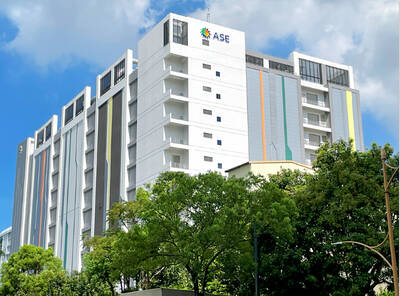US job openings jumped to a record high in June, outpacing hiring, the latest indication that companies are having trouble finding qualified workers.
The monthly Job Openings and Labor Turnover Survey (JOLTS) released by the US Department of Labor on Tuesday also underscored labor market strength that will likely encourage the US Federal Reserve to continue tightening monetary policy despite benign inflation and concerns about consumer spending.
“Companies are running out of workers to hire to do the job or even train to do the work, and this is a ticking time bomb for economic growth,” said Chris Rupkey, chief economist at MUFG in New York. “Today’s JOLTS data bring a September meeting balance sheet unwind announcement a little closer to reality.”
JOLTS, is one of the job market metrics on Fed Chairwoman Janet Yellen’s so-called dashboard.
Economists expect the US central bank will announce a plan to start reducing its US$4.2 trillion portfolio of Treasury bonds and mortgage-backed securities at its next policy meeting next month.
However, tame inflation and worries about consumer spending amid tepid wage growth and faltering motor vehicle sales suggest that the Fed might delay raising interest rates again until December.
The bank has increased borrowing costs twice this year.
Job openings, a measure of labor demand, increased by 461,000 to a seasonally adjusted 6.2 million. That was the highest level since the data series started in December 2000 and pushed the job openings rate up two-tenths of a percentage point to a near one-year high of 4 percent.
The monthly increase in job openings was the largest since July 2015. The surge in job openings was almost broad-based.
There were 179,000 additional vacancies in the professional and business services industries. The health care and social assistance sector had 125,000 more job openings and construction companies had an additional 62,000 unfilled positions.
In June, job openings were concentrated in the midwest and west regions.
The ratio of job openings to unemployment hit a 16-year high. Hiring was little changed at 5.4 million in June, leaving the hiring rate steady at 3.7 percent.
The gap between job openings and hiring points to a skills mismatch, which was also corroborated by a separate report on Tuesday from the National Federation of Independent Business, which showed job openings at a 16-year high last month.
Small businesses cited a lack of skills as the main reason for the vacancies. Others also blamed “unreasonable” wage expectations, attitude, appearance as well as drug addiction for disqualification of job seekers.
Economists are optimistic that tightening labor market conditions will spur faster wage growth. Annual wage growth has struggled to break above 2.5 percent, contributing to inflation persistently running below the Fed’s 2 percent target.
“The JOLTS report continues what has been a reasonably strong run for the labor market data and we expect continued improvement in the job market to keep upward pressure on wages,” said Daniel Silver, an economist at JPMorgan in New York.
Other details of the JOLTS report were mixed. About 3.1 million US employees voluntarily quit their jobs in June, down from 3.2 million in May. As a result, the quits rate, which the Fed looks at as a measure of job market confidence, dipped to 2.1 percent from 2.2 percent in May.
Layoffs rose 28,000 to 1.7 million in June, lifting the layoffs rate one-tenth of a percentage point to 1.2 percent.
“Layoff rates are historically low. But the recent increase may be worth watching,” said Jed Kolko, chief economist for job Web site Indeed in San Francisco.

AI BOOST: Although Taiwan’s reliance on Chinese rare earth elements is limited, it could face indirect impacts from supply issues and price volatility, an economist said DBS Bank Ltd (星展銀行) has sharply raised its forecast for Taiwan’s economic growth this year to 5.6 percent, citing stronger-than-expected exports and investment linked to artificial intelligence (AI), as it said that the current momentum could peak soon. The acceleration of the global AI race has fueled a surge in Taiwan’s AI-related capital spending and exports of information and communications technology (ICT) products, which have been key drivers of growth this year. “We have revised our GDP forecast for Taiwan upward to 5.6 percent from 4 percent, an upgrade that mainly reflects stronger-than-expected AI-related exports and investment in the third

Mercuries Life Insurance Co (三商美邦人壽) shares surged to a seven-month high this week after local media reported that E.Sun Financial Holding Co (玉山金控) had outbid CTBC Financial Holding Co (中信金控) in the financially strained insurer’s ongoing sale process. Shares of the mid-sized life insurer climbed 5.8 percent this week to NT$6.72, extending a nearly 18 percent rally over the past month, as investors bet on the likelihood of an impending takeover. The final round of bidding closed on Thursday, marking a critical step in the 32-year-old insurer’s search for a buyer after years of struggling to meet capital adequacy requirements. Local media reports

TECHNOLOGICAL RIVALRY: The artificial intelligence chip competition among multiple players would likely intensify over the next two years, a Quanta official said Quanta Computer Inc (廣達), which makes servers and laptops on a contract basis, yesterday said its shipments of artificial intelligence (AI) servers powered by Nvidia Corp’s GB300 chips have increased steadily since last month, should surpass those of the GB200 models this quarter. The production of GB300 servers has gone much more smoothly than that of the GB200, with shipments projected to increase sharply next month, Quanta executive vice president Mike Yang (楊麒令) said on the sidelines of a technology forum in Taipei. While orders for GB200 servers gradually decrease, the production transition between the two server models has been

ASE Technology Holding Co (日月光投控), the world’s largest integrated circuit (IC) packaging and testing supplier, yesterday announced a strategic collaboration with Analog Devices Inc (ADI), coupled with the signing of a binding memorandum of understanding. Under the agreement, ASE intends to purchase 100 percent shares of Analog Devices Sdn Bhd and acquire its manufacturing facility in Penang, Malaysia, a press release showed. The ADI Penang facility is located in the prime industrial hub of Bayan Lepas, with an area of over 680,000 square feet, it said. In addition, the two sides intend to enter into a long-term supply agreement for ASE to